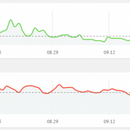Separately supplied and conditioned indoor tent
At mr hughes’ encouragement I am posting again on this topic but with a different overall strategy.
For context, here is the old topic: https://www.greenbuildingadvisor.com/question/separately-supplied-and-conditioned-room-within-a-room
Based on how the last few weeks have gone, I am re-adjusting my strategy. Between the really bad fire smoke and the start of fall rain and wind, I have felt pretty bad (for reference, imagine the discomfort intensity of having food poisoning, but for several weeks 24/7) and I don’t think it’s realistic to work on converting that porch without first marginally improving my situation here, because discomfort is high enough that it’s already taken me so long just to write this post.
DC Contrarian’s suggestion of positive pressure via filtered supply ventilation seemed like a good starting point.
So here’s the overall strategy:
1) positively pressurize an indoor tent with filtered and heated supply ventilation, and maybe add humidification control via a ducted dehumidifier loop
2) if it looks like it will take me a while to convert said porch, possibly look into adding an ERV to the tent and a way to hook up a portable air conditioner (from mid-July to mid-Sept it can reach 82-87F indoors for days to weeks at a time due to west facing glazing and poor insulation/thermal bridging from the steel studs)
3) use the lessons learned from the prior stages to inform a design and more elaborate buildout of the converted porch
For the indoor tent:
I was thinking of making a cubic bubble by wrapping a canopy tent frame in Intello or similar with the membrane also making up a bathtub floor. (https://www.eurmax.com/frames-with-wheeled-bags.html) I can probably fit an 8×12′ or 10×10′ frame in the living space here with enough room around the sides to work on it.
I’m not sure how to handle the floor. Maybe just put some kind of rug over the Intello, or plywood with battens on the bottom, or maybe just a whole bunch of Ikea coffee tables to create a platform and live on that ‘floor’ ala Japan. The floor it would go on top of is engineered hardwood with unknown layers beneath. The plywood solution would probably be the most durable especially if I added a sealed 4-6” tall rim to tape the membrane walls to.
I don’t think I would try to insulate it. Maybe throw some blankets over the top. Maybe don’t even bother.
For the door, I was thinking about https://zipup.com/product/twin-zipper-door/ or similar.
For the supply ventilation, I’d probably run ducts from an exterior window to a particulate and carbon filter box and then to an inline resistance heater. I can’t imagine putting a portable heater inside the tent would be a good idea. And I think a duct loop for a dehumidifier might be important, but I’m not sure. I think the ducting on the tent would have to be through some kind of plywood plate that is just stood up from the ground using a few 2×4 scraps.
Looking ahead, if I’m stuck here longer than expected, an ERV might be nice, and I could probably just put a portable air conditioner inside the tent and treat the unit space as the outdoors for the AC unit.
Some questions that come to mind, assuming this plan even makes sense:
0) will a positive pressure environment introduce too much exterior air into the condo unit and make things worse over the medium term?
1) how to handle pressure points on the membrane, or will they even be an issue?
2) what happens if I need to repair the membrane?
3) will a zipper door hold up over time, and if not, what kind of measures would be good to extend the durability? Or is there a better option?
4) would dehumidification be important?
5) How to attach ducting to the tent? Plywood plate etc?
attached are the interior conditions since I began monitoring
GBA Detail Library
A collection of one thousand construction details organized by climate and house part










Replies
Use polyethylene sheet instead of intello. Poly is much cheaper, and will work just fine here. You can use furring strips tacked to the walls through the poly in the corners to hold things up. For a floor, plywood is fine if you can just tape the poly to the actual floor. The nice thing about positive pressure is that any leaks leak out, so the leaks aren’t really a problem here. The positive pressure will also tend to push the poly out towards the walls, so if you hang the poly directly against the walls, the pressure will push the poly flat against the walls and will make it look a little better “for free” — you won’t need lots of supports to make it stay, just the corners and maybe a few extra on the ceiling. A staple gun can secure the poly to the furring strips where needed. Think of this like inflating a balloon inside of a box.
Any repairs can be made using clear packaging tape. You don’t need anything fancy, it just has to stay stuck.
For positive pressure, you can make a simple enclosure for some pleated filters using 1/4” Masonite. Grainger stocks many small blowers that can draw air through the filters and pressurize the filtered room. A small centrifugal blower will work better here than a fan will. I would arrange the blower to pressurize the filter box, then use flexible dryer vent hose to connect the filter box to the filtered room. A long zipper (which you can get from a fabric store) can be sewn into the poly to make a “door”.
Remember that the positive pressure makes it unnecessary to completely seal every air leak, and you actually need some leakage to keep air moving through the space so that it doesn’t get stagnant when you’re in there.
Bill